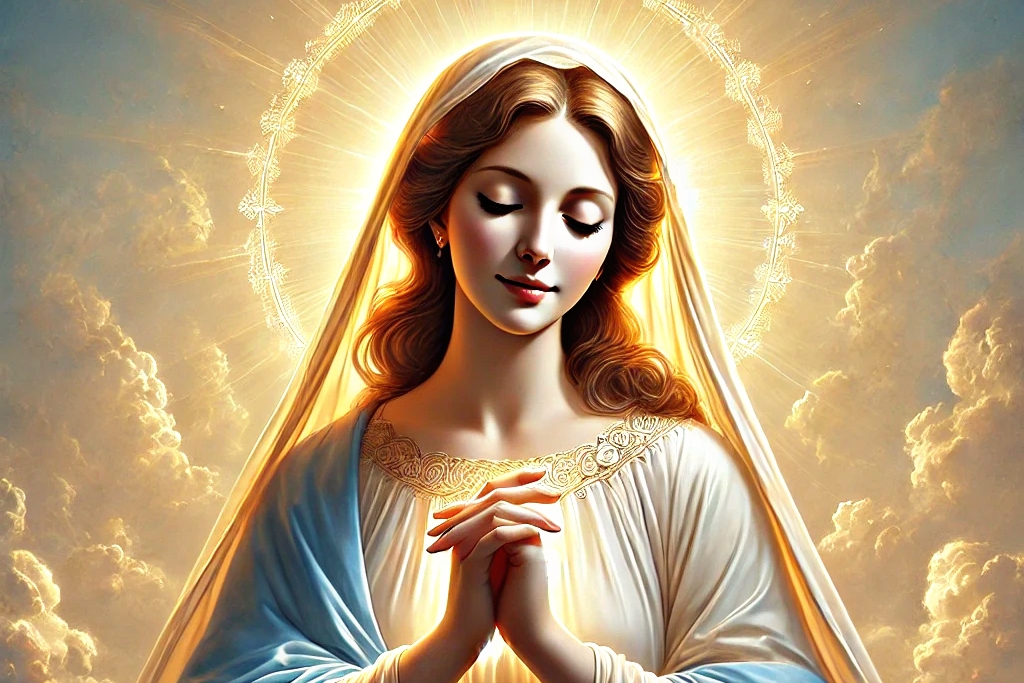The Litany of the Blessed Virgin Mary, also known as the Litany of Loreto, is one of the most cherished and widely used prayers in the Catholic Church. This litany is a poetic and rhythmic sequence of invocations, titles, and praises directed to the Blessed Virgin Mary, highlighting her virtues, roles, and intercessory power. Its beauty and depth have made it a cornerstone of Marian devotion for centuries. In this comprehensive article, we will explore the origins, structure, theological significance, and cultural impact of the Litany of the Blessed Virgin Mary, while reflecting on its enduring relevance in modern spirituality.
Origins of the Litany of the Blessed Virgin Mary
The Litany of the Blessed Virgin Mary has a rich history that traces back to the early Christian era, though its formal structure as we know it today developed during the Middle Ages. Its association with the Shrine of Loreto in Italy gave rise to its alternative name, the Litany of Loreto.
The shrine itself, dedicated to Mary, became a major pilgrimage site in the late medieval period, and the litany was recited there regularly. Pope Sixtus V officially approved the litany in 1587, and it has since been embraced by the universal Church. Over the centuries, additional titles have been added to reflect theological developments and the evolving devotion to Mary.
Structure of the Litany of the Blessed Virgin Mary
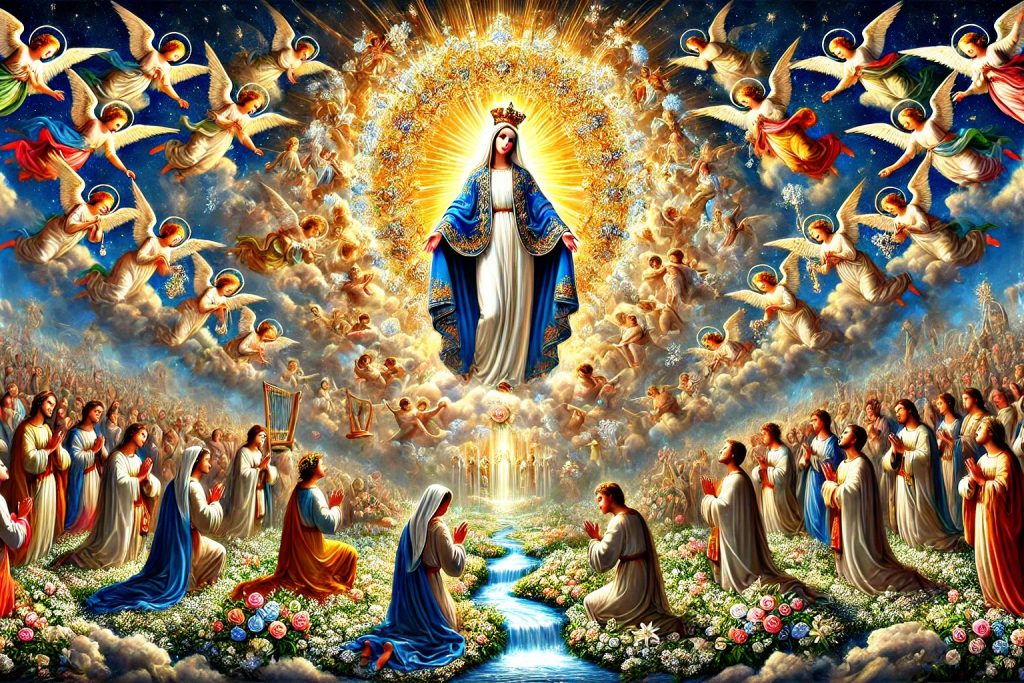
The Litany of the Blessed Virgin Mary is composed of several distinct sections, each designed to guide the faithful through a meditative and prayerful journey. Its repetitive and rhythmic style fosters contemplation and draws the mind and heart toward Mary’s unique role in salvation history.
- Opening Invocation:
The litany begins with an invocation of the Holy Trinity, acknowledging God the Father, Son, and Holy Spirit. This establishes the litany within the broader context of Christian worship, affirming Mary’s role as a mediator, not as an object of worship herself. - Titles of Mary:
The central portion of the litany consists of a series of Marian titles, each reflecting a particular aspect of her character, virtues, or roles. These titles are drawn from Scripture, tradition, and theological reflection. Examples include:- Holy Mother of God
- Mother of Divine Grace
- Virgin Most Merciful
- Tower of Ivory
- Queen of Angels
- Intercessory Prayers:
After the recitation of Mary’s titles, the faithful ask for her intercession with phrases such as “Pray for us.” This underscores Mary’s role as a compassionate advocate who brings the needs of humanity before her Son, Jesus Christ. - Closing Prayers:
The litany concludes with additional invocations and a final prayer, often tailored to the occasion or season, solidifying the connection between the individual’s prayer and God’s divine plan.
Theological Significance of the Litany of the Blessed Virgin Mary
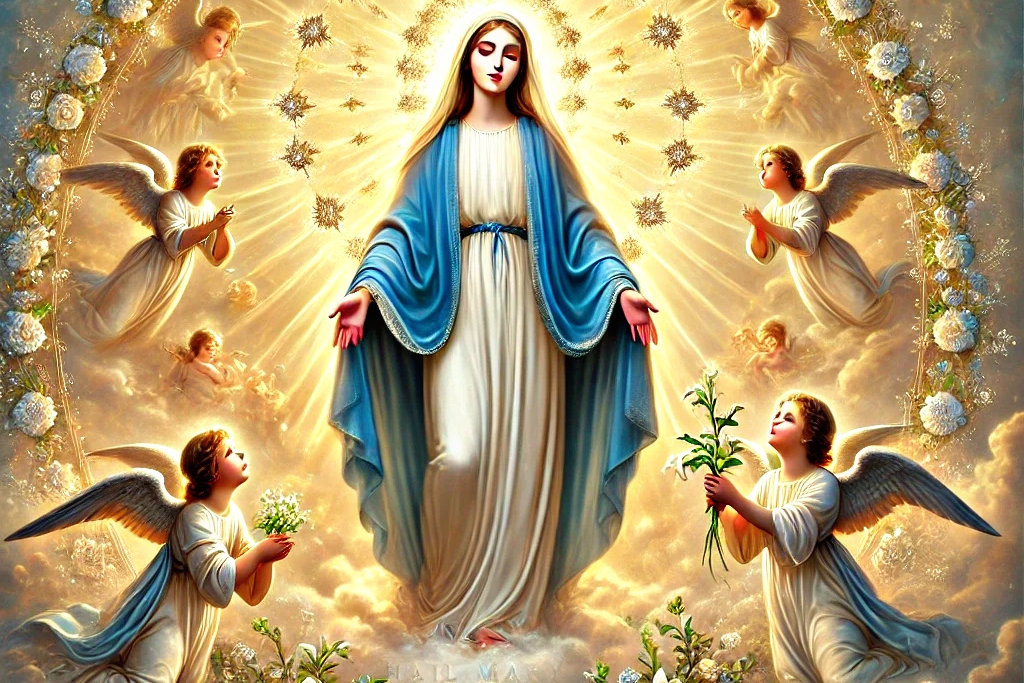
The Litany of the Blessed Virgin Mary serves as both a hymn of praise and a theological meditation. Each title ascribed to Mary reflects her unique role in salvation history and the Church’s understanding of her virtues and attributes.
Mary as Mother and Intercessor
Many of the litany’s titles emphasize Mary’s maternal role, both as the mother of Jesus and as a spiritual mother to all believers. Phrases like Mother of Christ and Mother of the Church highlight her intimate connection with the Incarnation and her ongoing care for the faithful.
Mary’s Virtues
The titles Virgin Most Prudent, Virgin Most Faithful, and Virgin Most Powerful celebrate Mary’s virtues, presenting her as a model of holiness for all Christians. By meditating on these qualities, the faithful are encouraged to emulate her example in their own lives.
Mary as a Symbol of Hope and Refuge
Titles such as Refuge of Sinners and Comforter of the Afflicted reflect Mary’s role as a source of hope and consolation. These invocations remind the faithful that Mary is always available to intercede on their behalf, particularly in times of need.
Mary’s Connection to Christ
The litany consistently ties Mary’s identity to her relationship with Jesus. Titles like Gate of Heaven and Morning Star point to her role in leading the faithful to her Son and reflecting his light in the world.
Cultural Impact of the Litany of the Blessed Virgin Mary
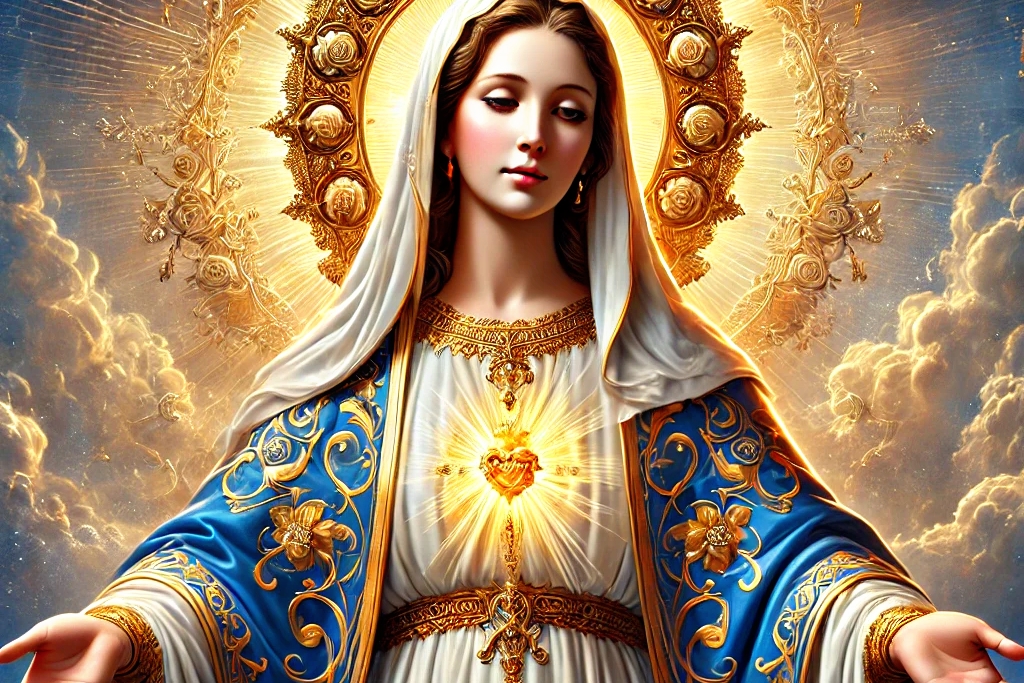
The Litany of the Blessed Virgin Mary has had a profound impact on Christian art, music, and popular devotion. Its poetic structure and evocative imagery have inspired countless works throughout history.
Art and Iconography
The titles in the litany have been depicted in Christian art for centuries. For instance, the title Tower of Ivory is often represented by a gleaming white tower, symbolizing Mary’s purity and strength. Similarly, the Ark of the Covenant title recalls Mary’s role as the bearer of Christ, paralleling the Ark’s function as the vessel of God’s presence in the Old Testament.
Music and Liturgy
Composers like Franz Schubert and Charles Gounod have set the Litany of the Blessed Virgin Mary to music, creating masterpieces that enhance its meditative quality. These musical settings are often performed in Marian processions, feast day celebrations, and personal devotions.
Pilgrimage and Devotion
Marian shrines around the world frequently incorporate the litany into their devotions. Pilgrims at places like Lourdes, Fatima, and Loreto often recite the Litany of the Blessed Virgin Mary, finding solace and spiritual renewal in its words.
The Litany of the Blessed Virgin Mary in Modern Times
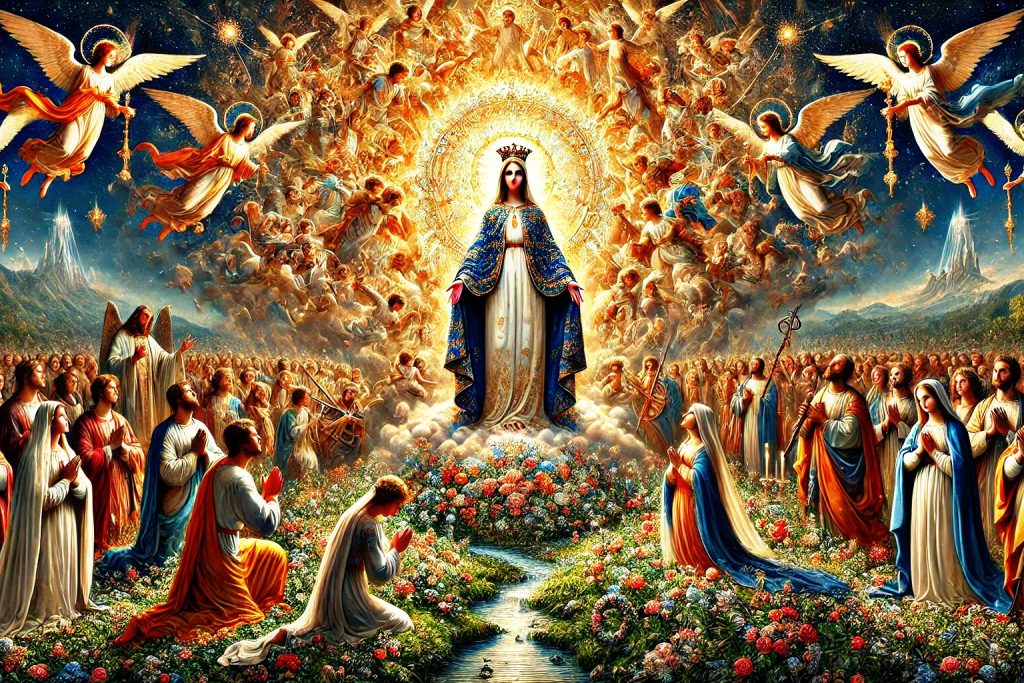
While rooted in tradition, the Litany of the Blessed Virgin Mary remains relevant in contemporary spirituality. Its timeless appeal lies in its ability to connect the faithful with Mary’s enduring presence and her role as a guide and advocate.
Personal Devotion
For individuals, the litany provides a framework for personal prayer and reflection. Its repetitive nature creates a sense of rhythm and focus, allowing the mind to meditate on Mary’s virtues and seek her intercession.
Community Worship
In communal settings, the litany fosters unity and shared devotion. Reciting it together, especially during Marian feasts or processions, strengthens bonds within the Church and reaffirms a collective commitment to faith.
Ecumenical and Interfaith Appeal
Though distinctly Catholic, the litany’s themes of maternal care, compassion, and hope resonate beyond denominational boundaries. Even within interfaith dialogues, Mary is often recognized as a unifying figure, celebrated for her virtues and her role in God’s plan.
Conclusion: The Enduring Legacy of the Litany of the Blessed Virgin Mary
The Litany of the Blessed Virgin Mary is more than just a prayer; it is a spiritual journey that invites the faithful to draw closer to Mary and, through her, to Christ. Its poetic titles, theological depth, and meditative rhythm have ensured its place as a cornerstone of Marian devotion for centuries.
Whether recited in solitude or as part of a community, the litany offers a profound way to honor Mary, reflect on her virtues, and seek her intercession. As a timeless expression of faith and love, the Litany of the Blessed Virgin Mary continues to inspire, comfort, and guide believers around the world, making it a cherished treasure of the Church.

